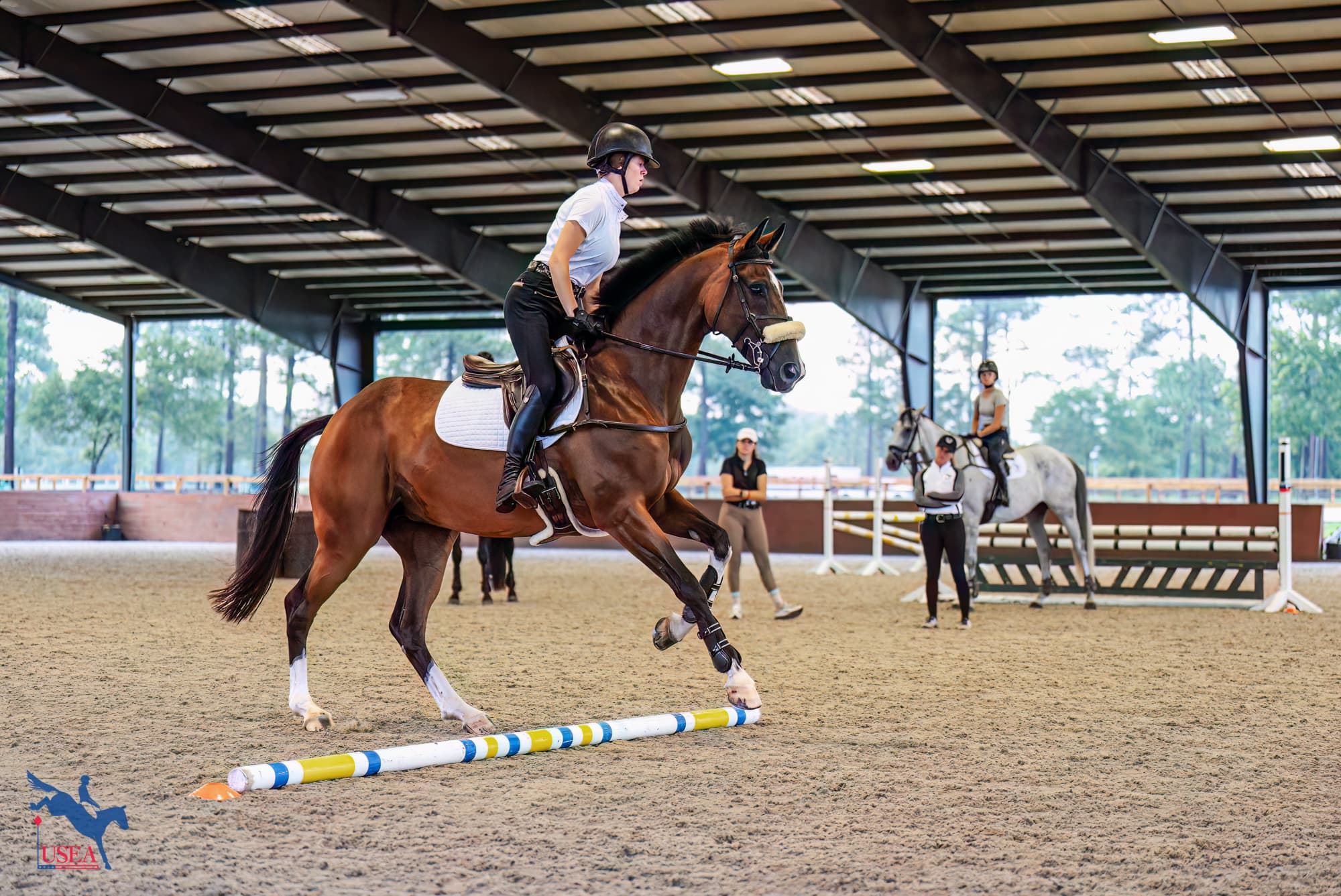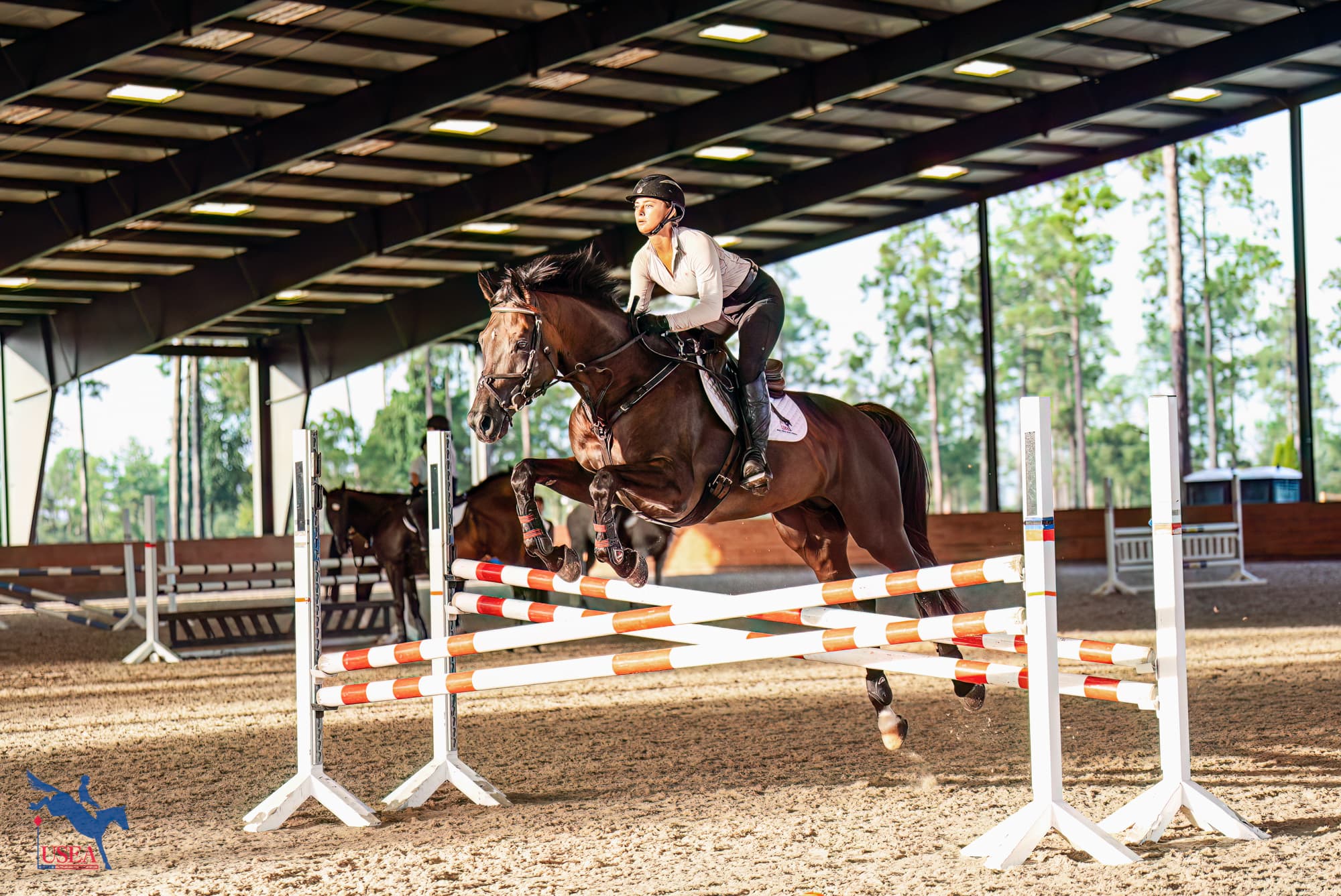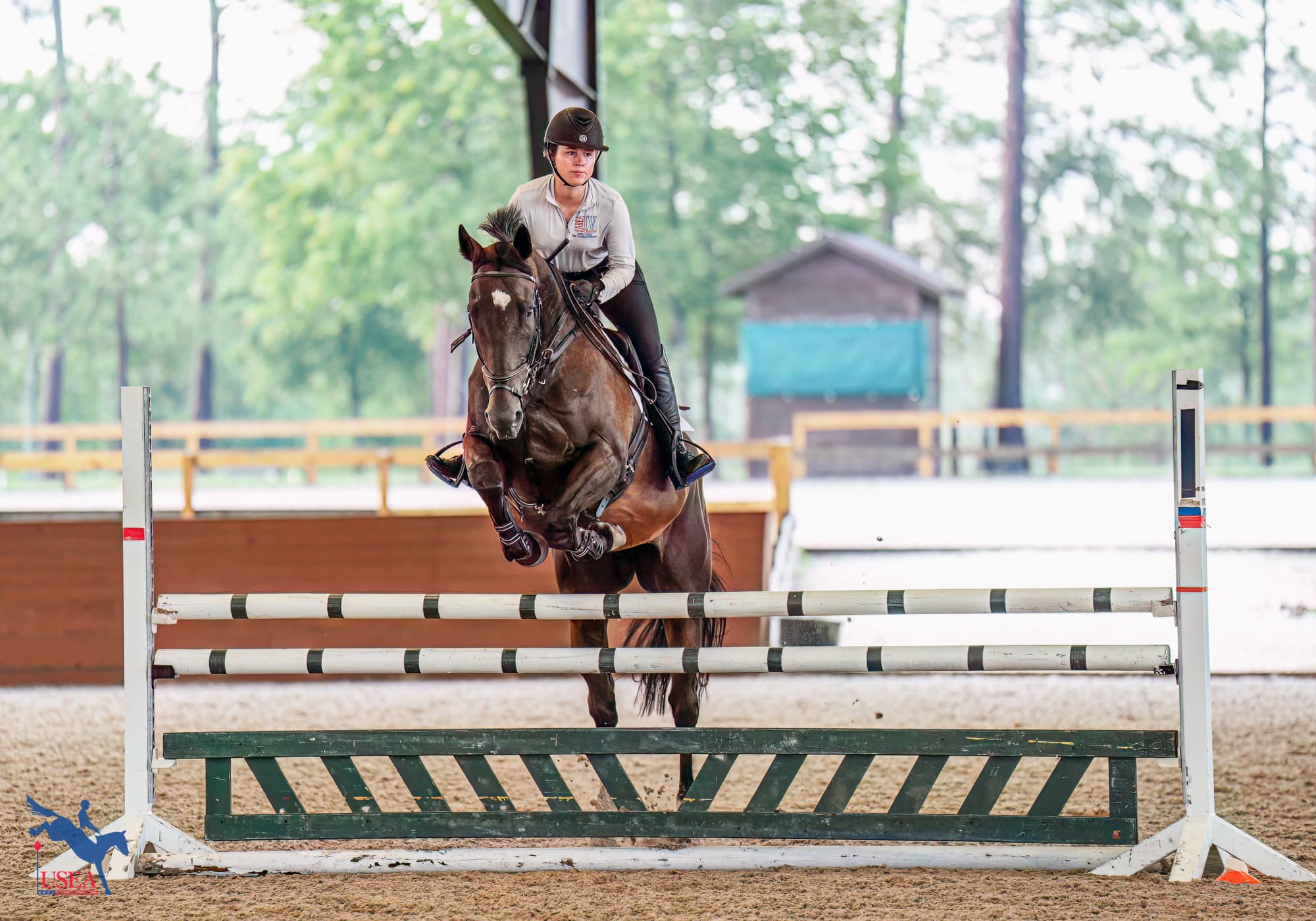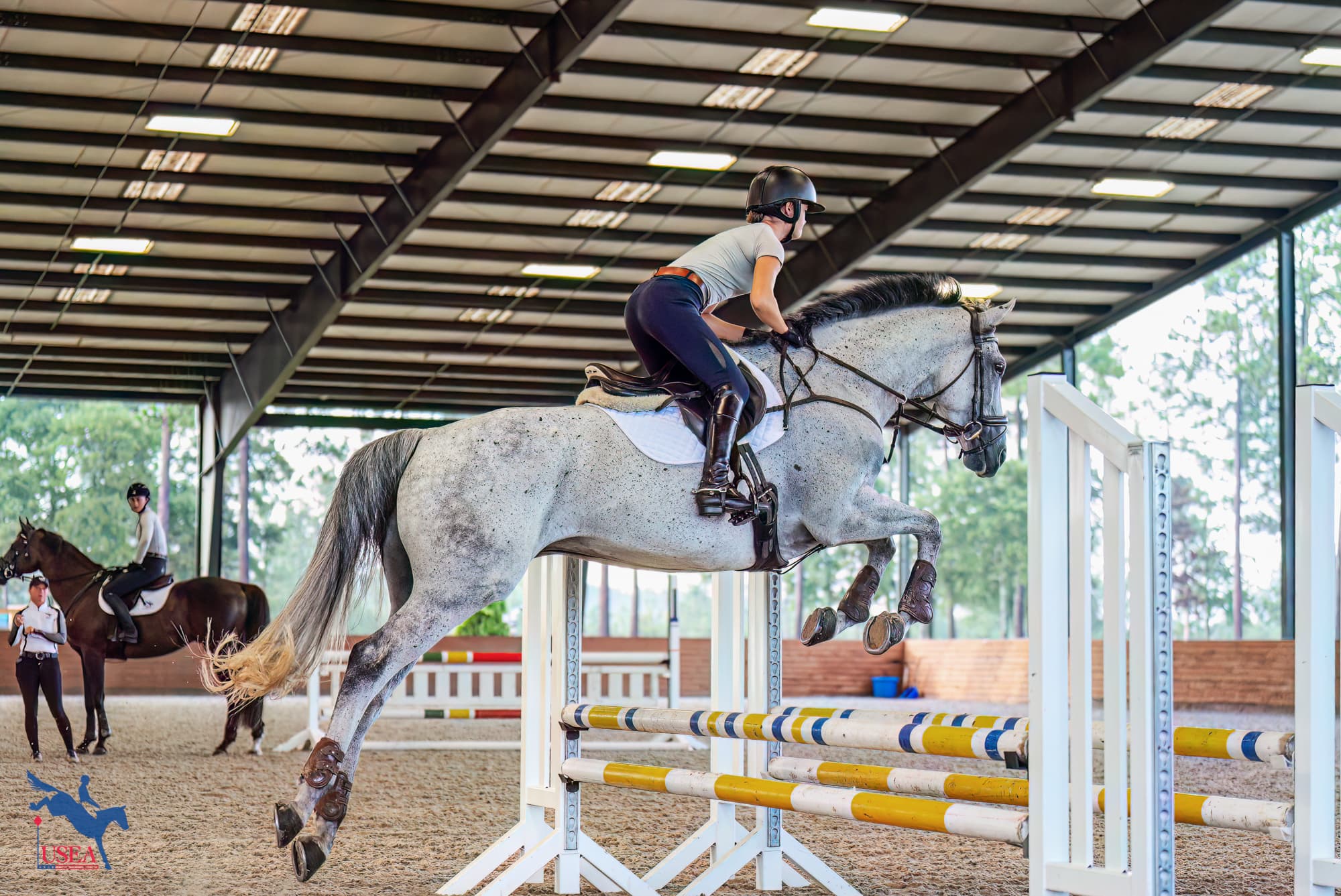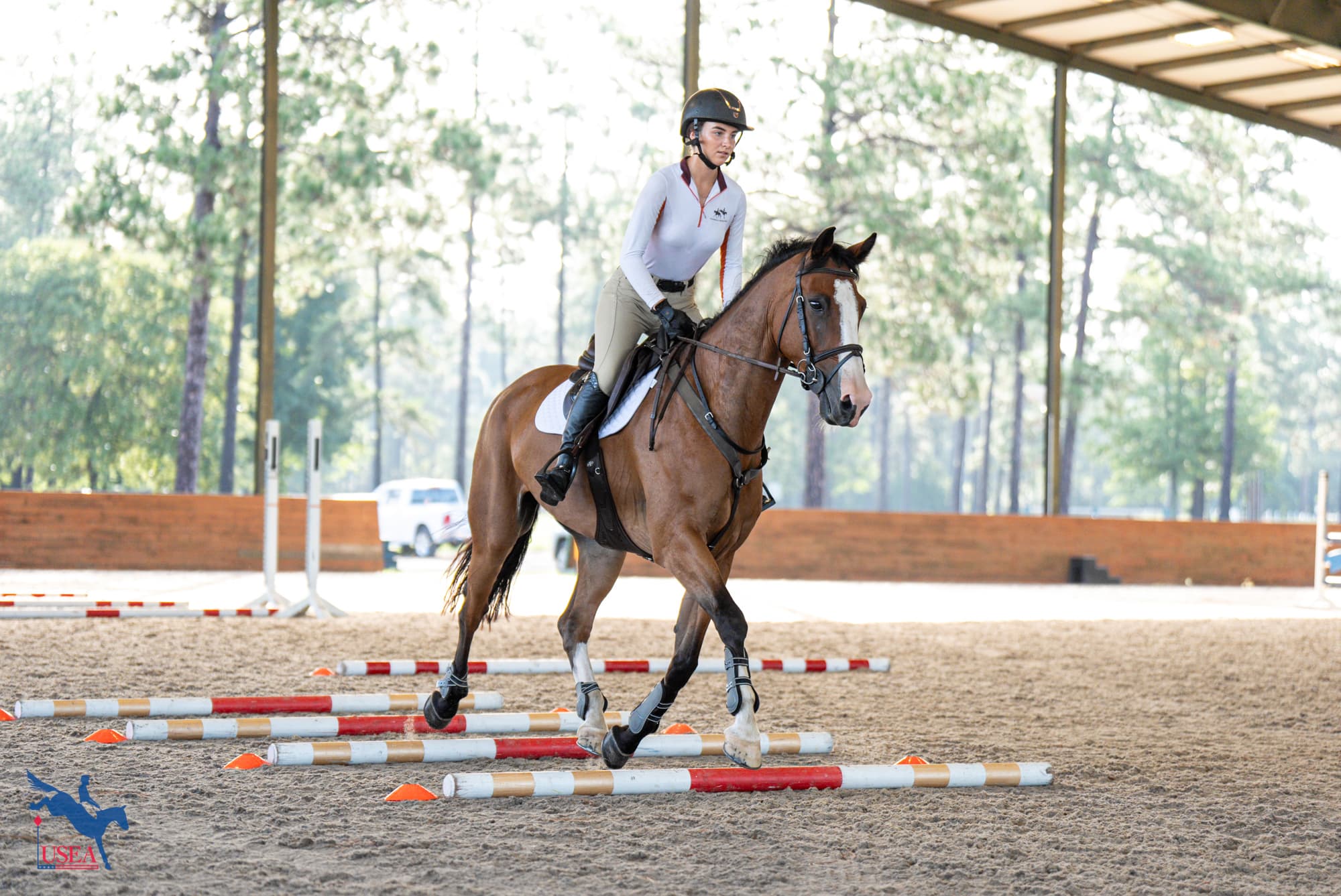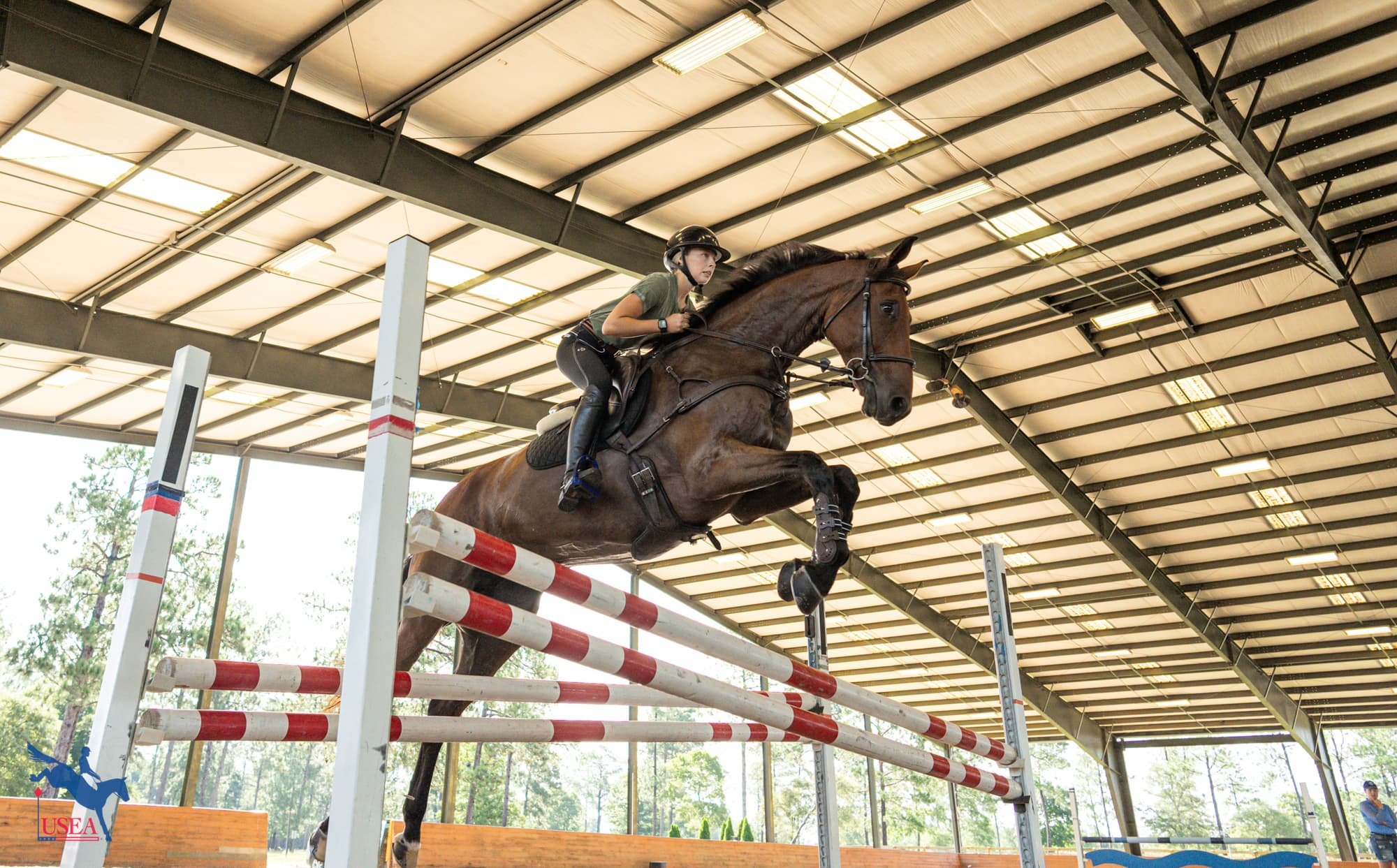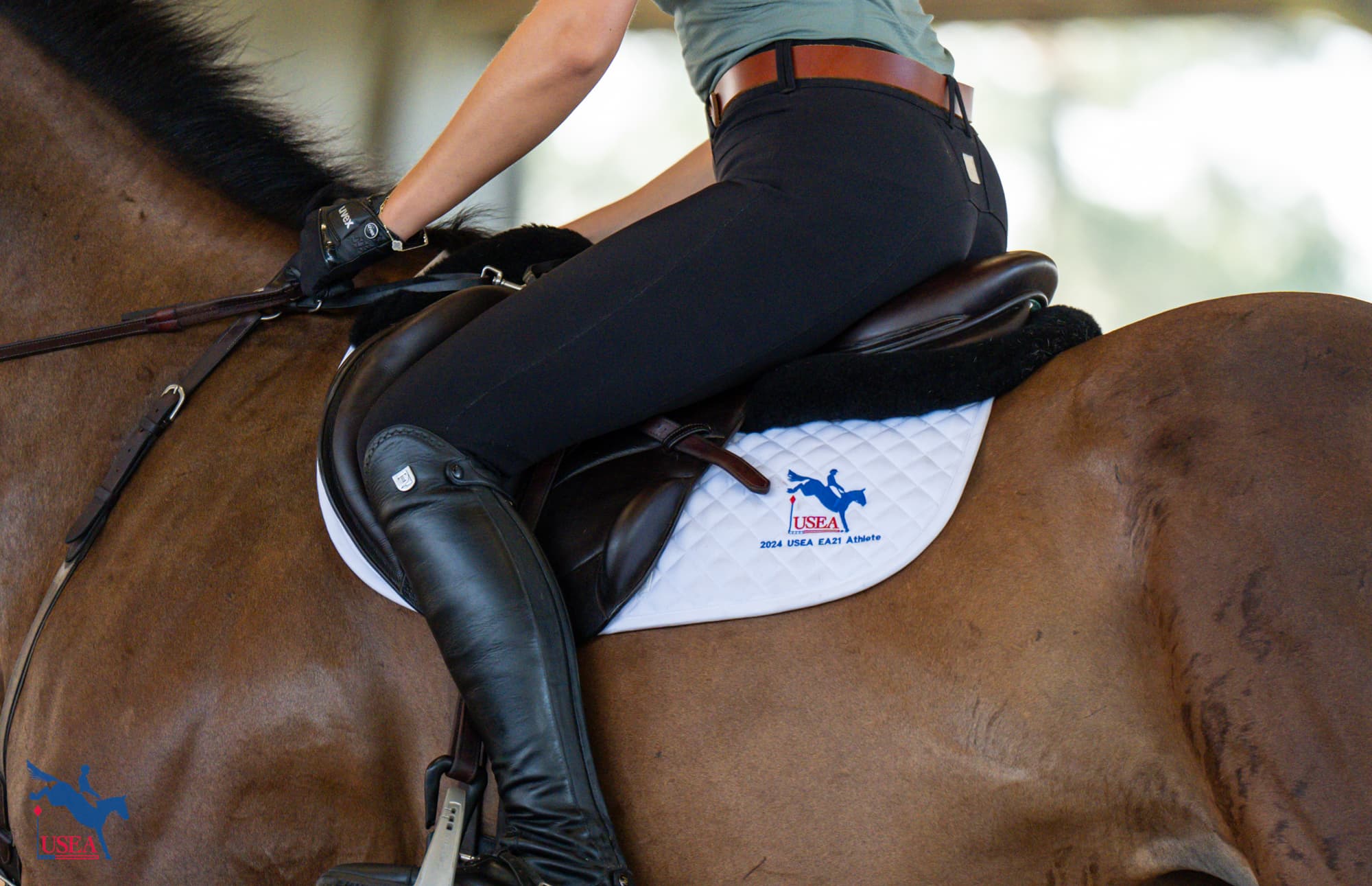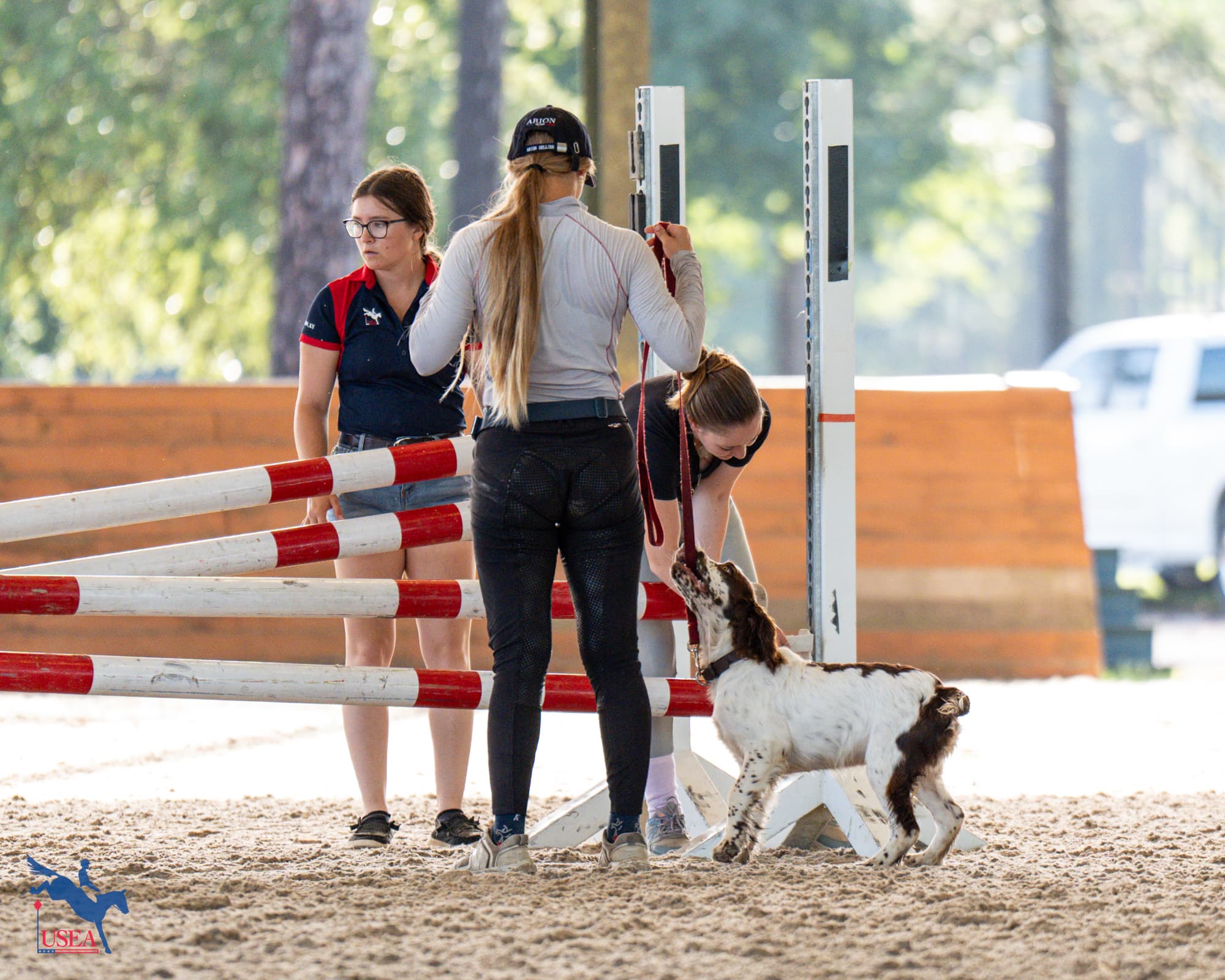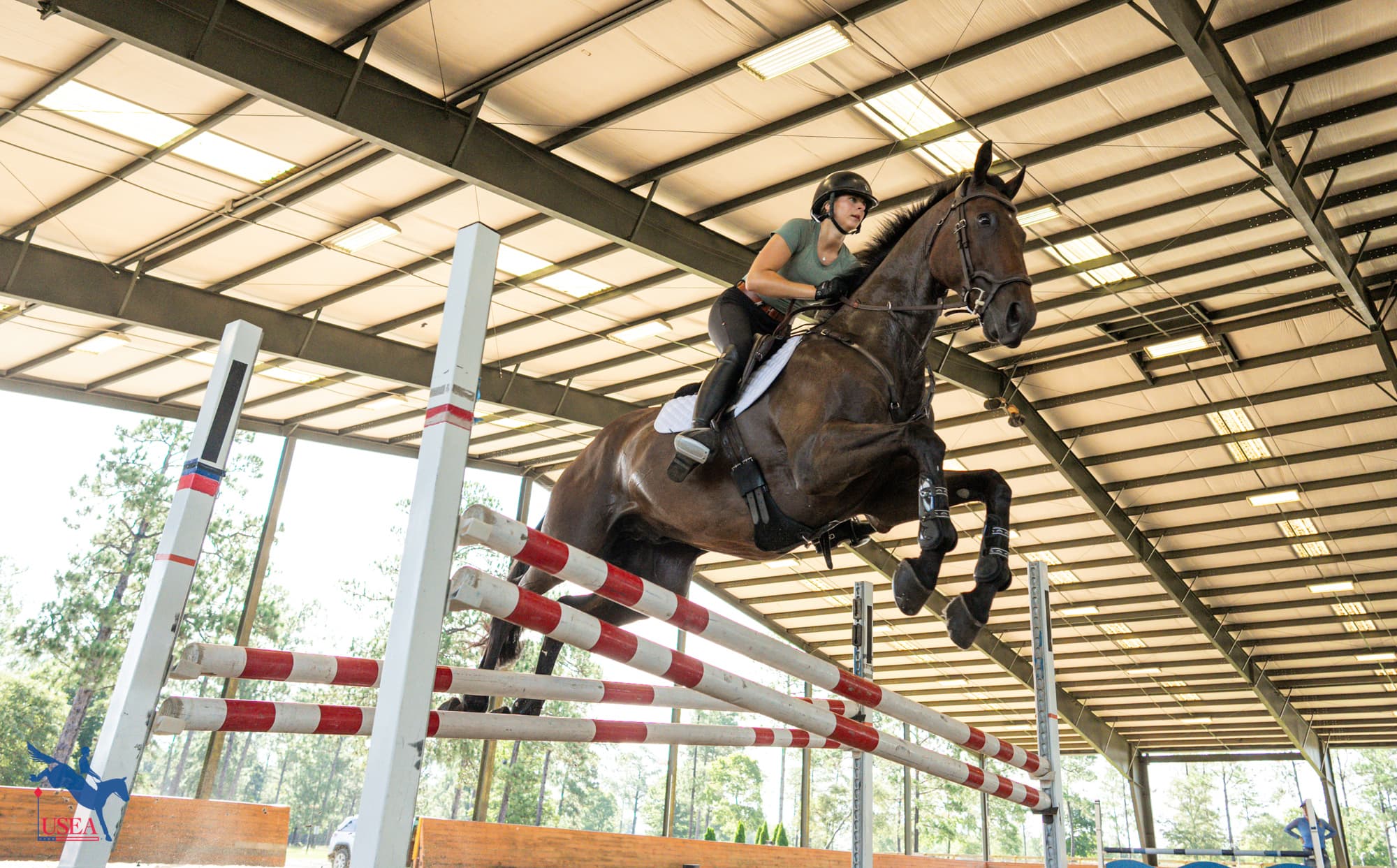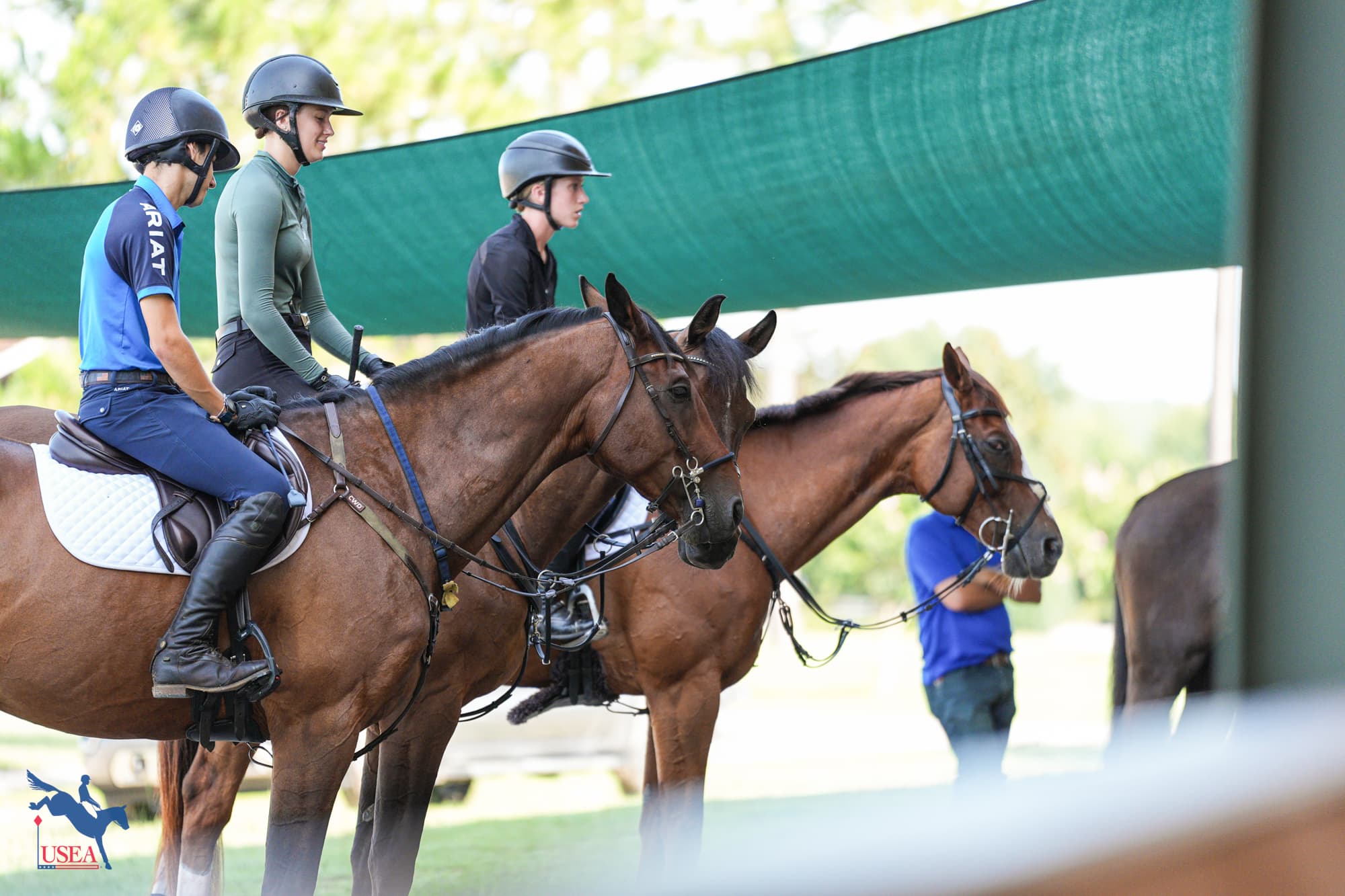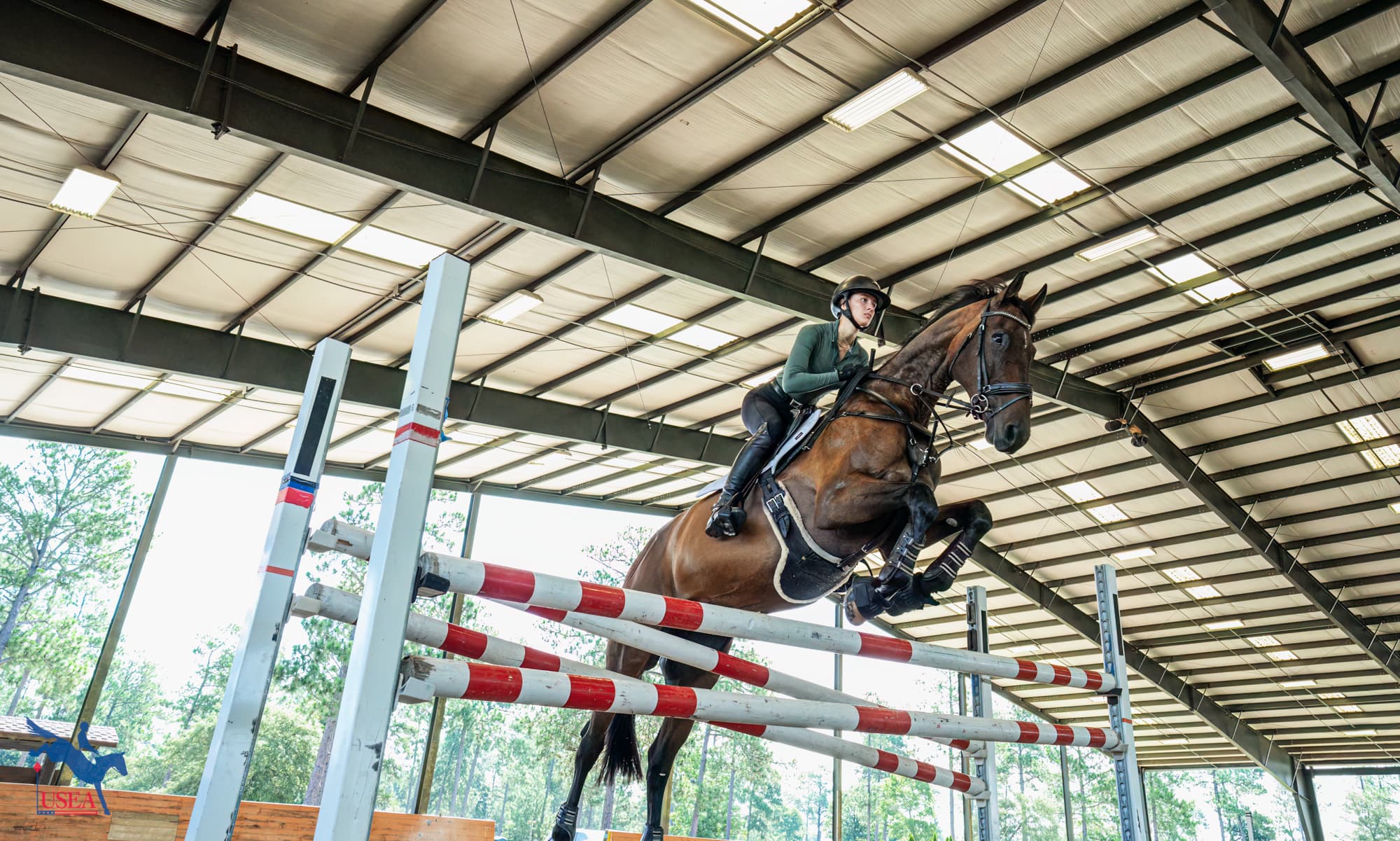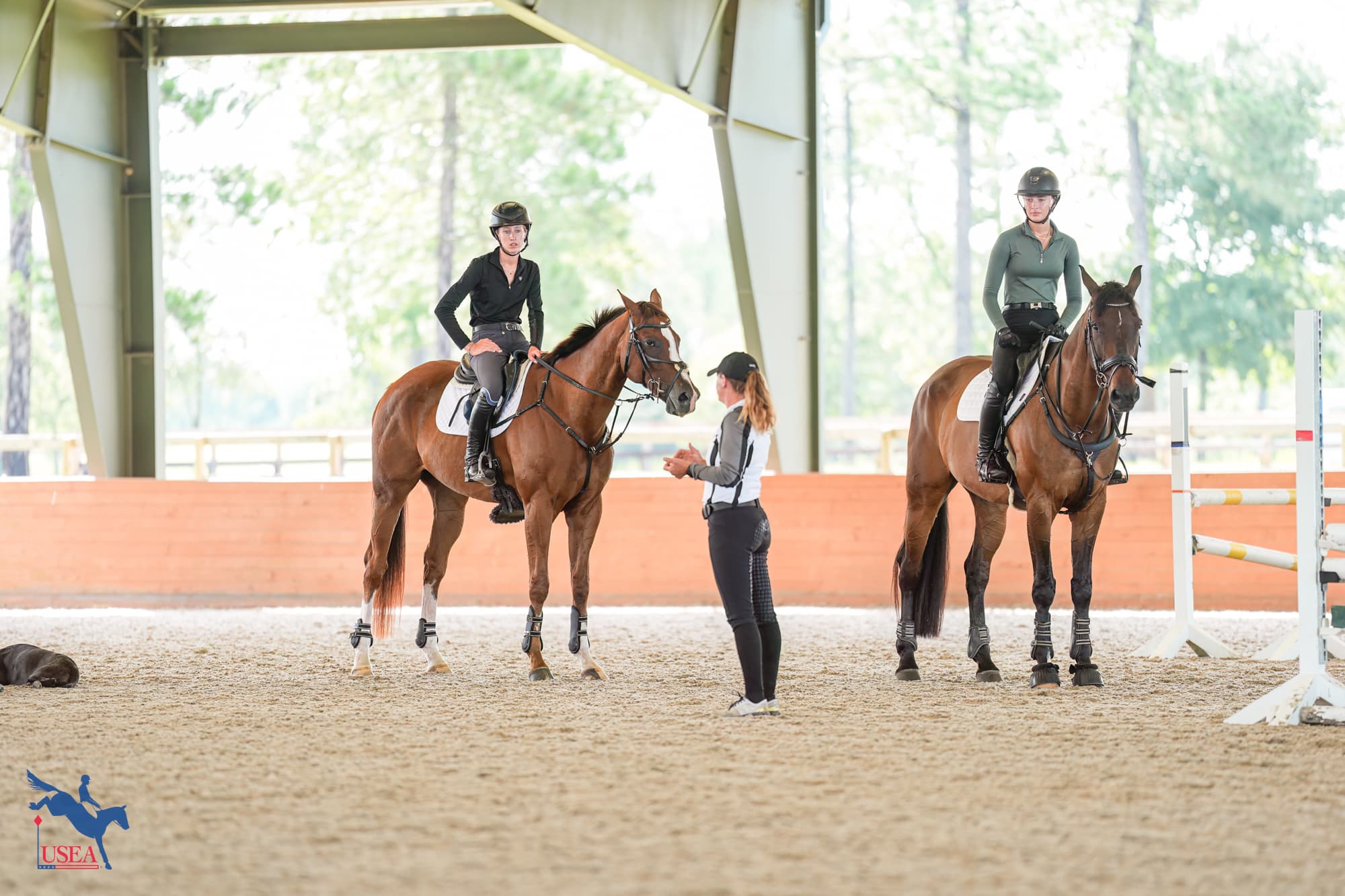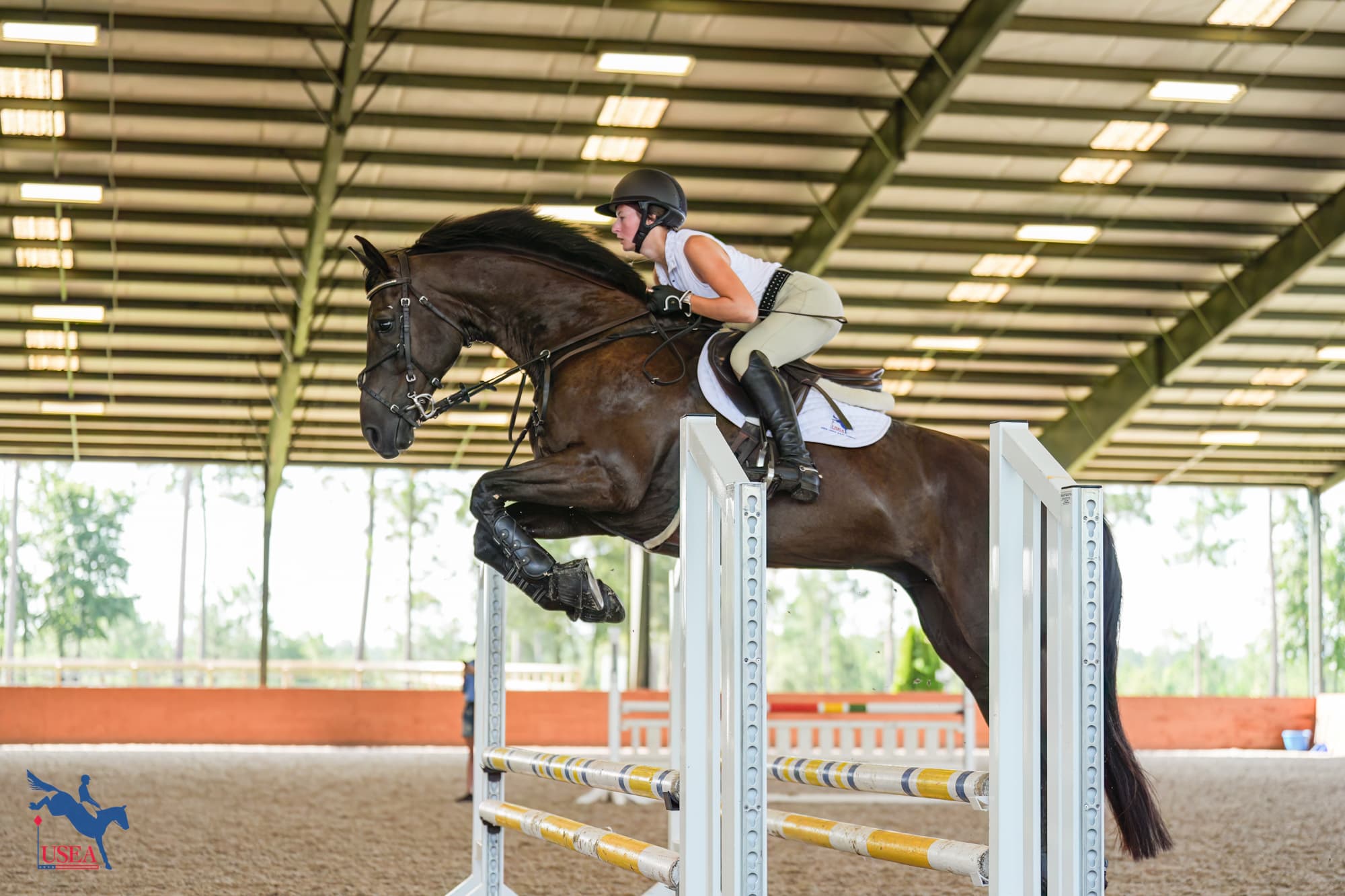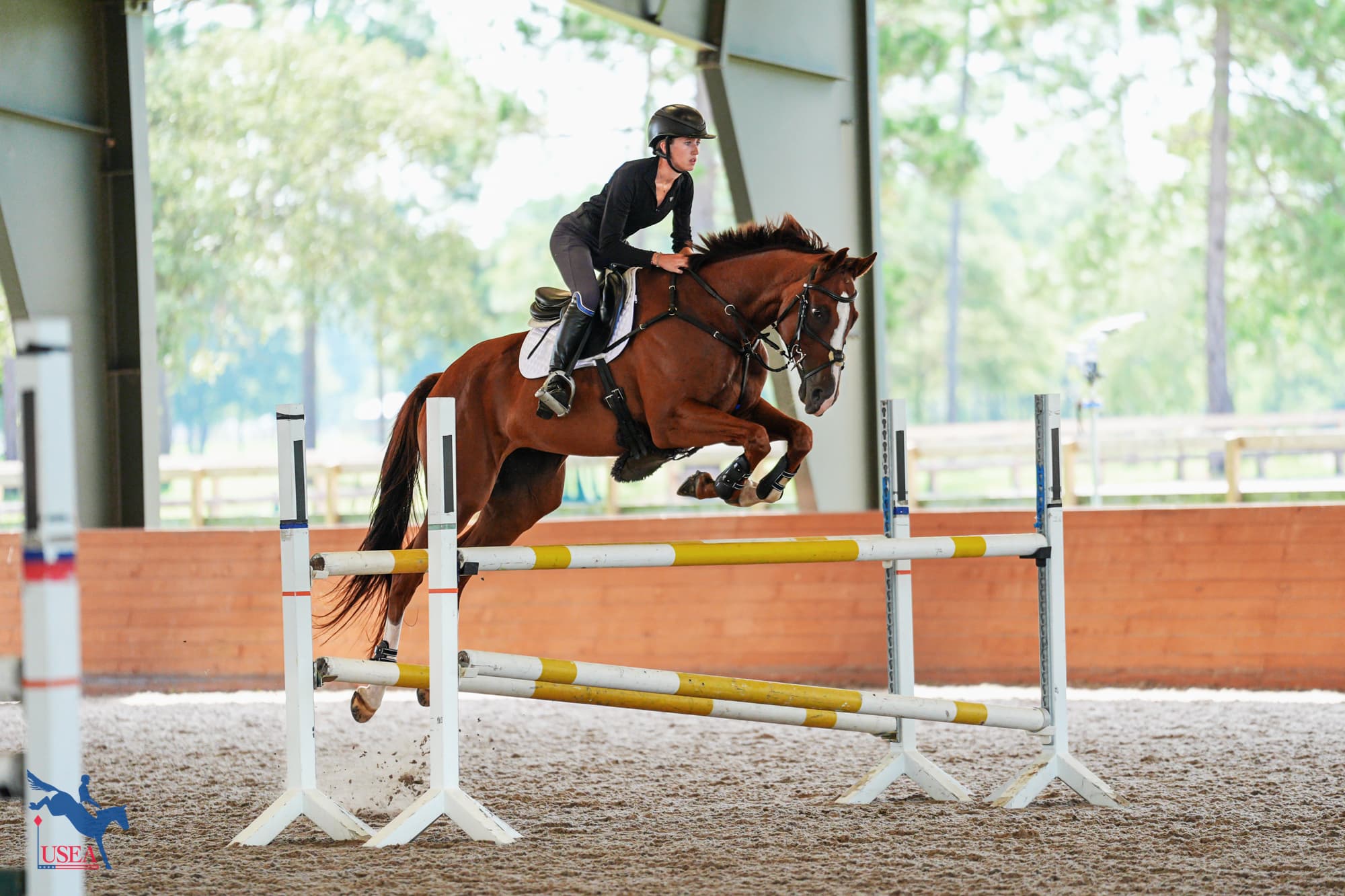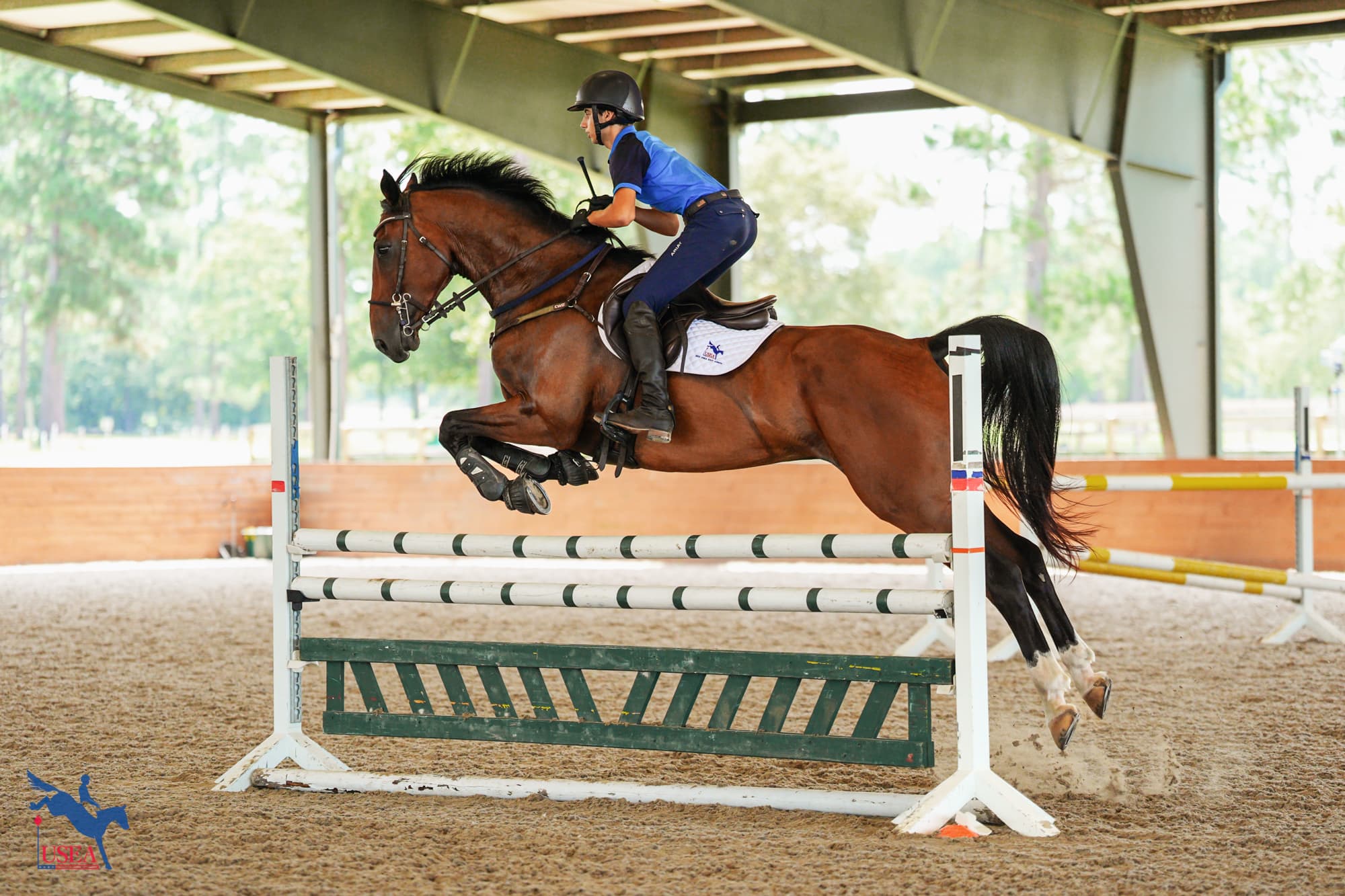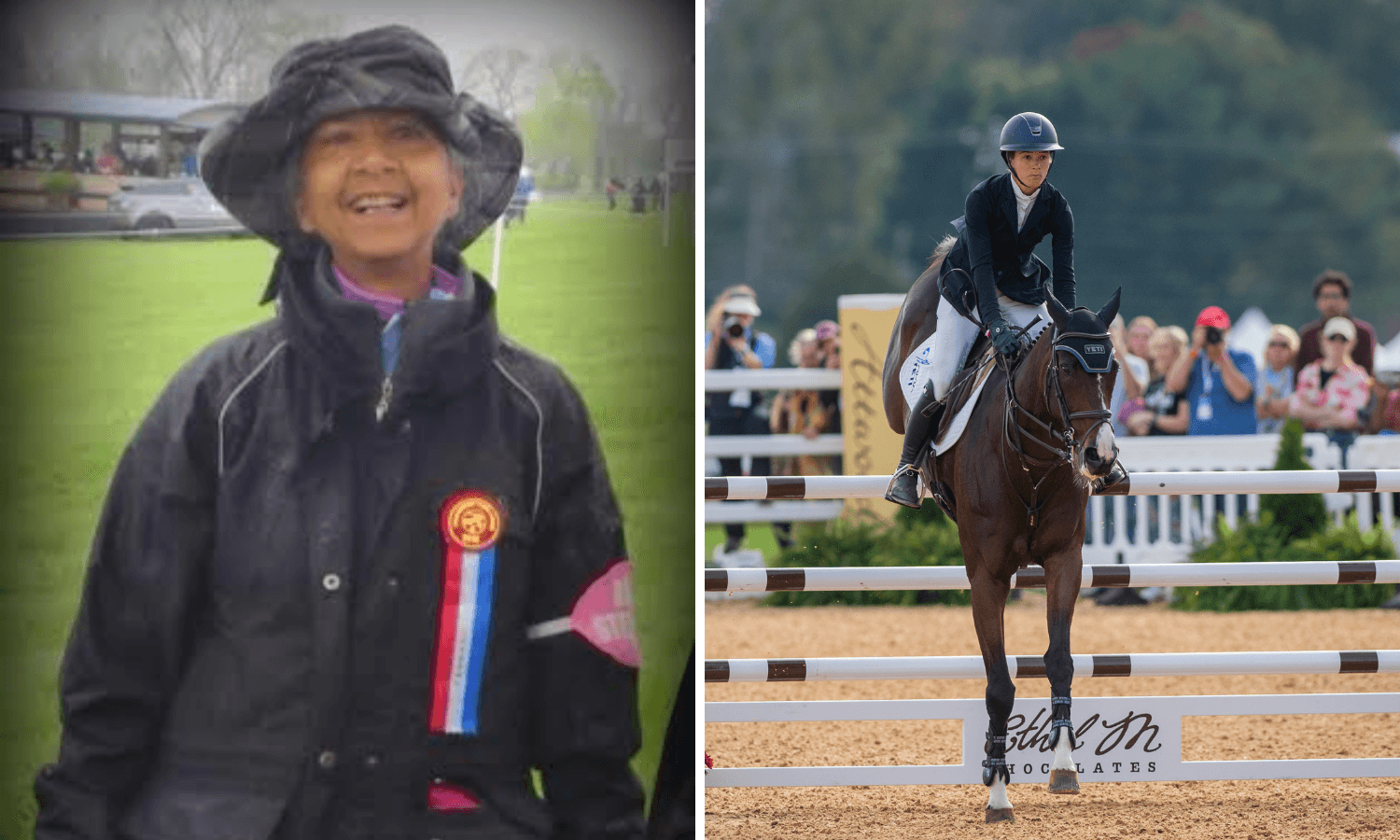Reading the Situation as You Go: Day 2 of the USEA EA21 East Coast II Clinic
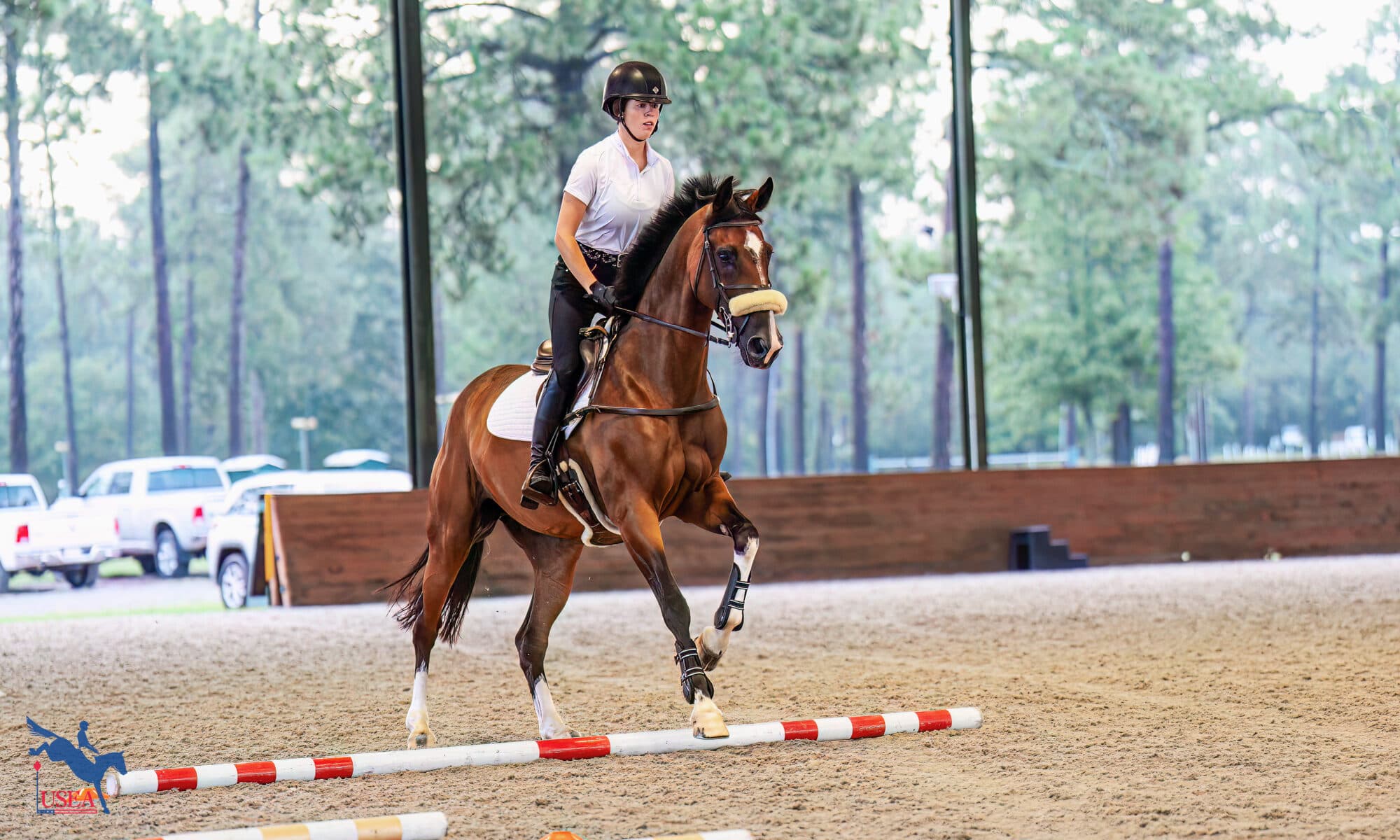
Aiken, S.C.—July 24—An ambitious start time of 6:30 a.m. for the final day of the USEA Emerging Athlete U21 (EA21) East Coast II Regional Clinic meant riders and horses could beat the southern heat. However, the early morning hour didn’t appear to phase any of the bright-eyed clinic participants or EA21 Coach Emily Mastervich Beshear. The enthusiasm carried over from day 1’s sessions was palpable, and Beshear didn’t waste any time “jumping” into today’s theme: assess your situation and respond accordingly.
“Our goal today wasn’t to just stick to a typical show jumping school,” said Beshear, “but to really challenge the riders to feel more in the moment instinctively and react to the situation. They also need to be able to read within a split second whether or not their horses were really with them while they were making those decisions.”
Beshear hit the ground running with a large repertoire of placing pole exercises to get each group of four going. “I love starting with poles whenever I can, especially when I’m working with new people. It gives you such good insight into how the horses are listening to the riders,” she said.
Beshear used pole exercises at both the trot and canter to accomplish key checkpoints of her warm-up plan. “We did some exercises at the trot, incorporating the leg yield, making sure the riders had their horses laterally in tune for jumping […] I had them do the same in two-point to ensure the rider’s aids were independent of their balance.
“The canter exercises had an element of adjustability,” Beshear continued. “The riders had to start with a short canter, open them up, and then feel how to put the horse back together. It opened their eyes to areas where they could improve their horse’s engagement and quality of canter. It got the riders in tune with those pieces before we started jumping. Then it became much more natural in the moment for the riders to feel what they needed to do to make the [over fences] exercises work well.”
With only seven fences in the ring (two outside oxer lines, one eight-stride one three-stride, and three verticals lined up end to end down the middle), the untrained eye may have seen a very simple course, but Beshear soon showed the riders how to make a lot out of a little.
She supplied each session with a variety of exercises: breaking up the eight-stride line with a placing pole and asking for a forward three before the pole and a waiting four following; riding a square turn from the middle vertical to an outside oxer then a sweeping turn from the middle vertical to the same outside oxer but in the same number of strides; “S” curving through the three middle verticals on an angle, etc. “I definitely tried to layer the exercises in a way that was fair to the horses to understand but the riders still had to be really clear to the horses what we were asking them to do,” she said.
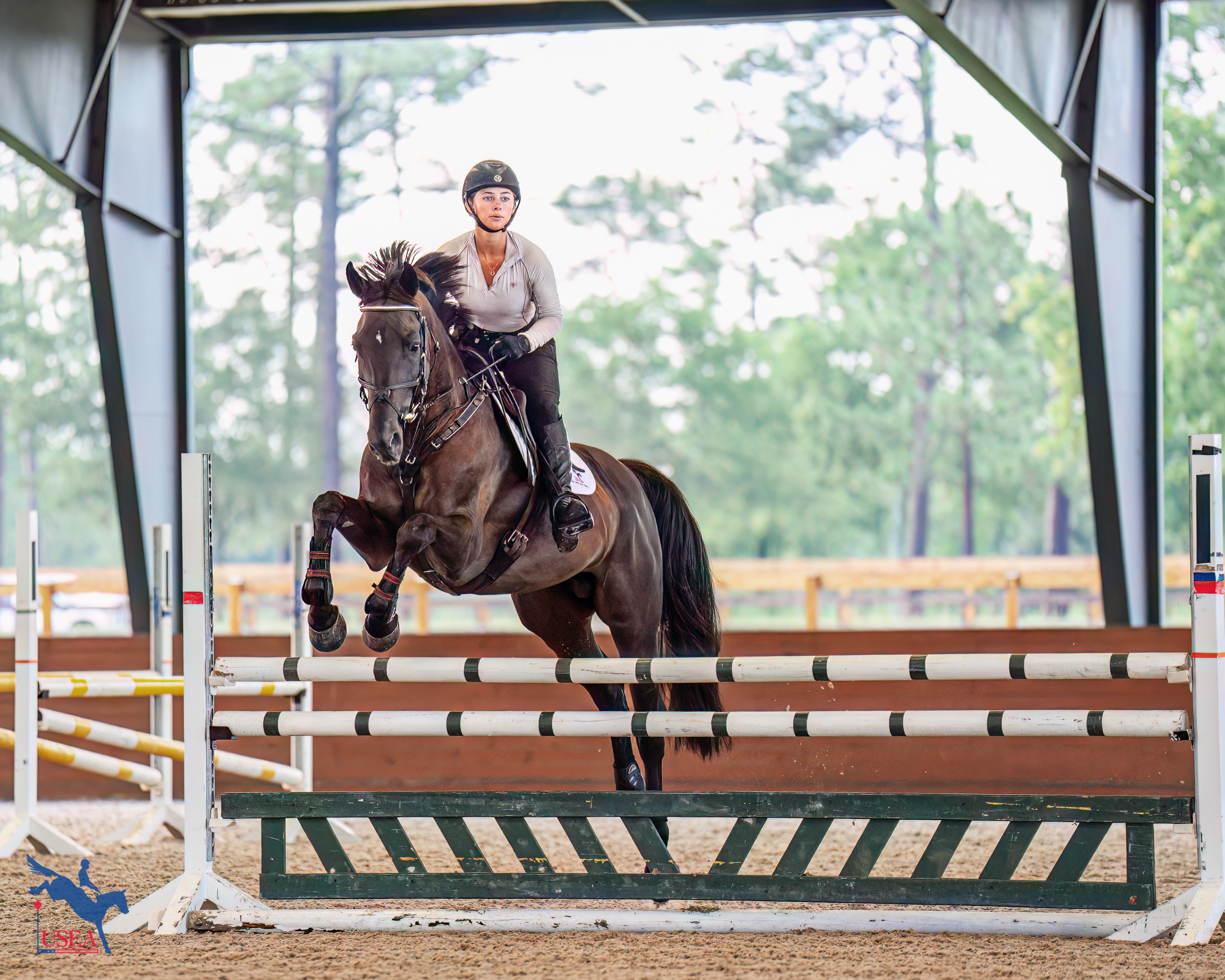
In each session, both horses and riders visibly grew in confidence in their skills as they worked through Beshear’s exercises. Catherine Frank, aboard Sandra Wilkes’ 10-year-old Trakehner stallion Dickens of Holme Ranch (Tzigabe *Pb* x Holme Grove Devaux) remarked, “The lesson really helped iron out where I’m still not confident in directing him because he is very trained and super willing. All the really technical turns where we had to come through, see our line, ride to it, and then we had the chance to come back around and finesse those lines, it really just made us sharper as we went around.”
Throughout the day, Beshear continuously encouraged forward thinking and rider adaptability. During the morning’s first session she commented, “I’m telling you what it should be, I’m not telling you what it will be.” Further clarifying, “We all go in with a Plan A, and then a Plan B, and then a Plan C; this is all about you guys having to read the situation as you go.”
Lara Roberts, whose 8-year-old Irish Sport Horse Fernhill Show Biz (Goodfellow VDL x Tilandra) is typically, “quite calm and a bit lazy,” really got to put Beshear’s words to practice. “Jax” came out “quite fresh and ready to go!” Roberts mused, “it was an adjustment for me to remember to be soft and ride forward even with him being quite strong. I had to balance keeping the connection while still allowing him to go forward.”
While Roberts’ horse seemed to have a little more pep in his step than usual, Jake Tessler’s Fernhill Focus Maxi an 11-year-old Irish Sport Horse gelding (Candillo Z x Stay Focused) was consistent in his way of going from their dressage work on Tuesday. Beshear tasked Tessler with incorporating the same tools they practiced on the flat between the fences to encourage “Elliot” to stretch forward through his frame and therefore “take [Tessler] through the air,” more effectively. Tessler absorbed, implemented, and was successful with Beshear’s instruction by the end of his lesson.
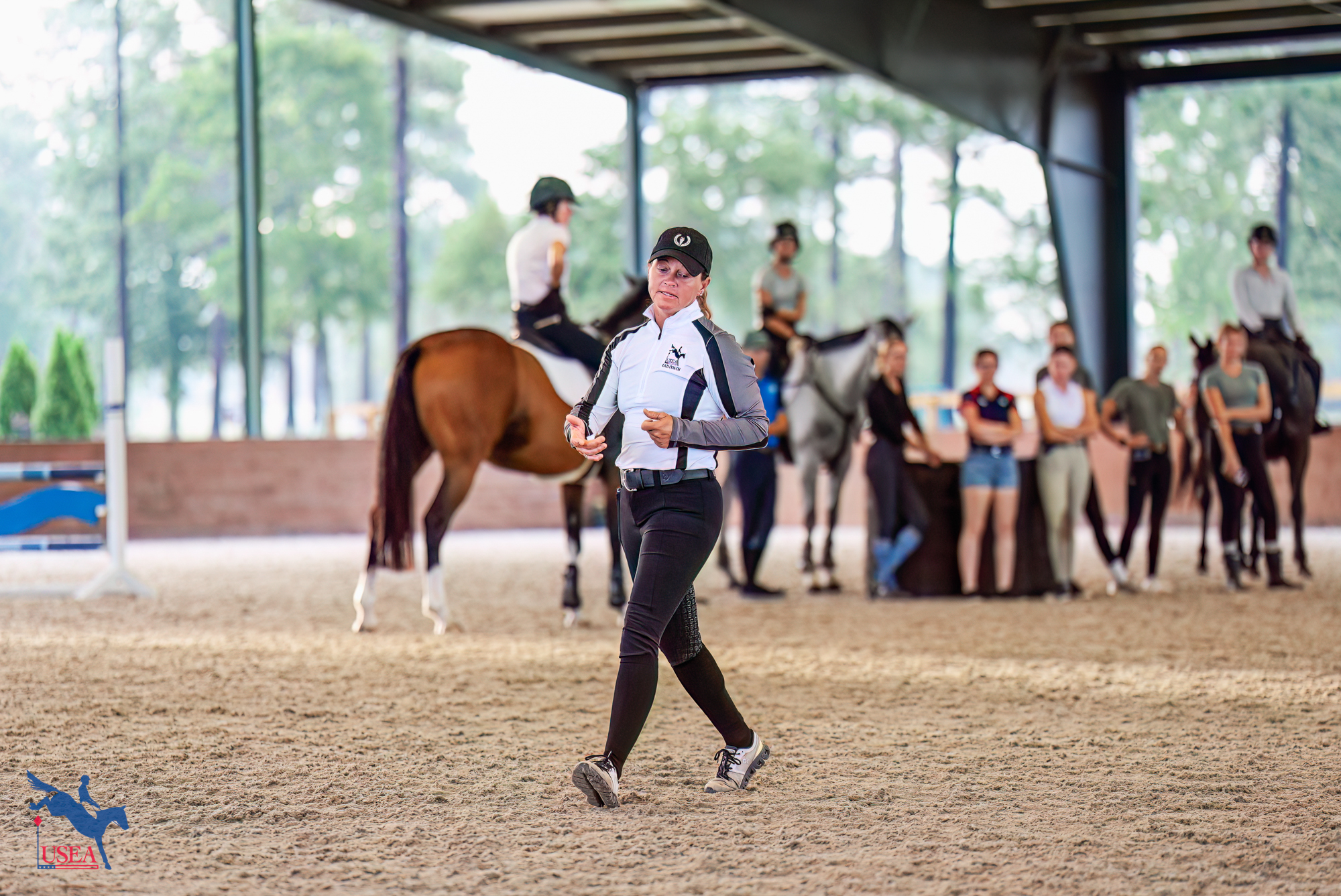
“Sometimes [Elliot] gets a bit stuck in front of the jumps; he kind of braces his head up high and shortens his neck,” Tessler explained. “Yesterday we worked on lengthening his frame and getting his nose to reach out, which has always been a goal for this horse. So today, I thought about moving him forward into the contact instead of messing with his head in front of the jumps. When I did it that way, he became nice and forward and felt amazing over the jumps.”
Beshear was incredibly pleased with everyone’s riding. “We don’t need to perfect it; it’s never going to be perfect. On cross-country you’re always going to have things that come up not quite the way you want,” she concluded. “All of these riders rode through these exercises really well, and that was our main aim for the day, to make their responses more instinctive. It turned out to be a great day!”
The Participants:
- Kate Bell
- Grace Dilger
- Catherine Frank
- Audrey Littlefield
- Jillian Newman
- Tate Northrup
- Lara Roberts
- Breeana Robinette
- Rebecca Roth
- Kelsey Seidel
- Devon Tresan
- Jake Tessler
Don't forget to follow the USEA’s coverage on social media!
Facebook | Instagram | Twitter
About the USEA Emerging Athlete U21 Program (EA21)
The purpose of the USEA Emerging Athletes U21 Program (EA21) is to identify and provide consistent quality instruction to the next generation of elite event riders. The aim is to create a pipeline for potential team riders by identifying and developing young talent, improving horsemanship and riding skills, and training and improving skills and consistency.
The USEA Emerging Athletes U21 Program was launched in 2022 with a model of five summertime regional clinics taught by selected USEA Eventing Coaches Program (ECP) instructors, leading to a winter national camp consisting of selected Young Riders from the regional clinics. Athletes who are 21 years or younger, are current members of their USEA Young Rider Area program, and are established at the Training Level or higher, are eligible to apply for the EA21 program. Click here to learn more about the USEA EA21 Program.
The USEA would like to thank ARMA, Kerrits, PulseVet, Ride iQ, Sidelines Magazine, Schneiders Saddlery and #WeRideTogetherfor sponsoring the USEA Emerging Athletes U21 Program.
